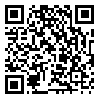Volume 25, Issue 2 (Summer 2024)
jrehab 2024, 25(2): 336-355 |
Back to browse issues page
Download citation:
BibTeX | RIS | EndNote | Medlars | ProCite | Reference Manager | RefWorks
Send citation to:



BibTeX | RIS | EndNote | Medlars | ProCite | Reference Manager | RefWorks
Send citation to:
Mardani-Kivi M, Kamrani Moghadam S, Izadi A, Kazemnejad Leili E, Asadi K. Investigating the Best Time of Weight Bearing After Anterior Cruciate Ligament Reconstruction (Immediate or Delayed): A Randomized Clinical. jrehab 2024; 25 (2) :336-355
URL: http://rehabilitationj.uswr.ac.ir/article-1-3359-en.html
URL: http://rehabilitationj.uswr.ac.ir/article-1-3359-en.html
Mohsen Mardani-Kivi1 

 , Sina Kamrani Moghadam1
, Sina Kamrani Moghadam1 

 , Amin Izadi2
, Amin Izadi2 

 , Ehsan Kazemnejad Leili3
, Ehsan Kazemnejad Leili3 

 , Kamran Asadi *4
, Kamran Asadi *4 




 , Sina Kamrani Moghadam1
, Sina Kamrani Moghadam1 

 , Amin Izadi2
, Amin Izadi2 

 , Ehsan Kazemnejad Leili3
, Ehsan Kazemnejad Leili3 

 , Kamran Asadi *4
, Kamran Asadi *4 


1- Department of Orthopaedic, Orthopaedic Research Center, Faculty of Medicine, Poursina Hospital, Guilan University of Medical Sciences, Rasht, Iran.
2- Department of Orthopaedics, Faculty of Medicine, Guilan University of Medical Sciences, Rasht, Iran.
3- Department of Statistics, Faculty of Health, Guilan University of Medical Sciences, Rasht, Iran.
4- Department of Orthopaedic, Orthopaedic Research Center, Faculty of Medicine, Poursina Hospital, Guilan University of Medical Sciences, Rasht, Iran. ,kam_asadi@yahoo.com
2- Department of Orthopaedics, Faculty of Medicine, Guilan University of Medical Sciences, Rasht, Iran.
3- Department of Statistics, Faculty of Health, Guilan University of Medical Sciences, Rasht, Iran.
4- Department of Orthopaedic, Orthopaedic Research Center, Faculty of Medicine, Poursina Hospital, Guilan University of Medical Sciences, Rasht, Iran. ,
Abstract: (5916 Views)
Objective Postoperative rehabilitation protocols, such as immobilization and non-weight-bearing periods during the acute phase after anterior cruciate ligament (ACL) surgery vary depending on the surgeon or the institution and lack clear standardization. Weight bearing (WB) after ACL reconstruction (ACLR) is critical. This study compares the results of WB immediately after surgery and partial WB with a brace after ACLR.
Materials & Methods In this randomized clinical trial, the block random sampling method was used to select 84 patients who were divided into two groups. Group 1 was allowed to have full WB after surgery and Group 2 was asked to use braces after surgery, and they were divided into partial WB for one month and then full WB. Meanwhile, demographic information was recorded. The Lachman test, anterior knee pain, and kneeling pain before and one month after the surgery were also recorded. Knee function was evaluated using the international knee documentation committee, knee injury and osteoarthritis outcome score, and Lysholm scales before surgery and 1, 3, and 6 months after surgery. The data were analyzed using the SPSS software, version 20, and the Fisher exact test, the chi-square test, the Friedman test, and repeated measures analysis of variance.
Results Most of the patients were men under 30 years of age. There was no statistically significant difference in the demographic information of the patients in the two groups. Kneeling pain, anterior knee pain, and the Lachman test did not differ between the two groups one month after the surgery. There was no difference between the two groups in the scores using the international knee documentation committee, knee injury and osteoarthritis outcome score, and Lysholm score in the 6-month follow-up. All the examined indicators in each group improved over time.
Conclusion WB immediately after surgery compared to partial WB at 1, 3, and 6 months after ACLR do not differ; therefore, patients can bear full weight if they tolerate it.
Materials & Methods In this randomized clinical trial, the block random sampling method was used to select 84 patients who were divided into two groups. Group 1 was allowed to have full WB after surgery and Group 2 was asked to use braces after surgery, and they were divided into partial WB for one month and then full WB. Meanwhile, demographic information was recorded. The Lachman test, anterior knee pain, and kneeling pain before and one month after the surgery were also recorded. Knee function was evaluated using the international knee documentation committee, knee injury and osteoarthritis outcome score, and Lysholm scales before surgery and 1, 3, and 6 months after surgery. The data were analyzed using the SPSS software, version 20, and the Fisher exact test, the chi-square test, the Friedman test, and repeated measures analysis of variance.
Results Most of the patients were men under 30 years of age. There was no statistically significant difference in the demographic information of the patients in the two groups. Kneeling pain, anterior knee pain, and the Lachman test did not differ between the two groups one month after the surgery. There was no difference between the two groups in the scores using the international knee documentation committee, knee injury and osteoarthritis outcome score, and Lysholm score in the 6-month follow-up. All the examined indicators in each group improved over time.
Conclusion WB immediately after surgery compared to partial WB at 1, 3, and 6 months after ACLR do not differ; therefore, patients can bear full weight if they tolerate it.
Keywords: Anterior cruciate ligament (ACL), Weight-bearing (WB), Rehabilitation, Partial weight-bearing
Type of Study: Original |
Subject:
Rehabilitation Management
Received: 9/09/2023 | Accepted: 8/05/2024 | Published: 1/07/2024
Received: 9/09/2023 | Accepted: 8/05/2024 | Published: 1/07/2024
Send email to the article author
| Rights and permissions | |
 |
This work is licensed under a Creative Commons Attribution-NonCommercial 4.0 International License. |





